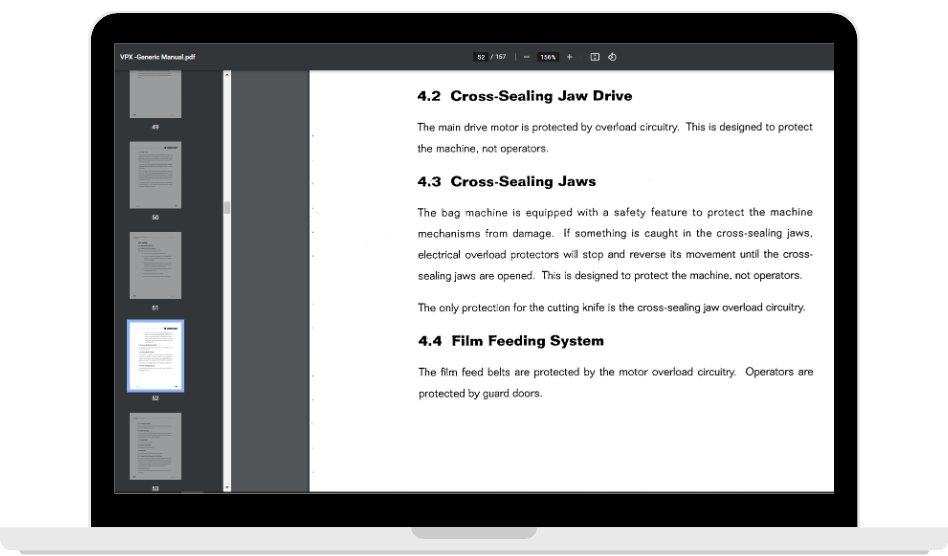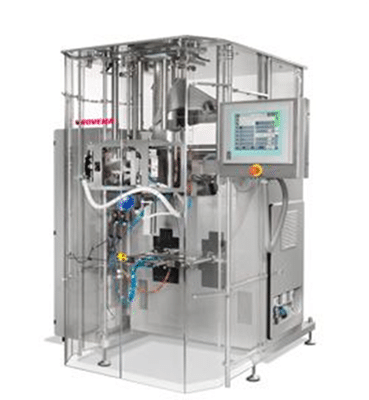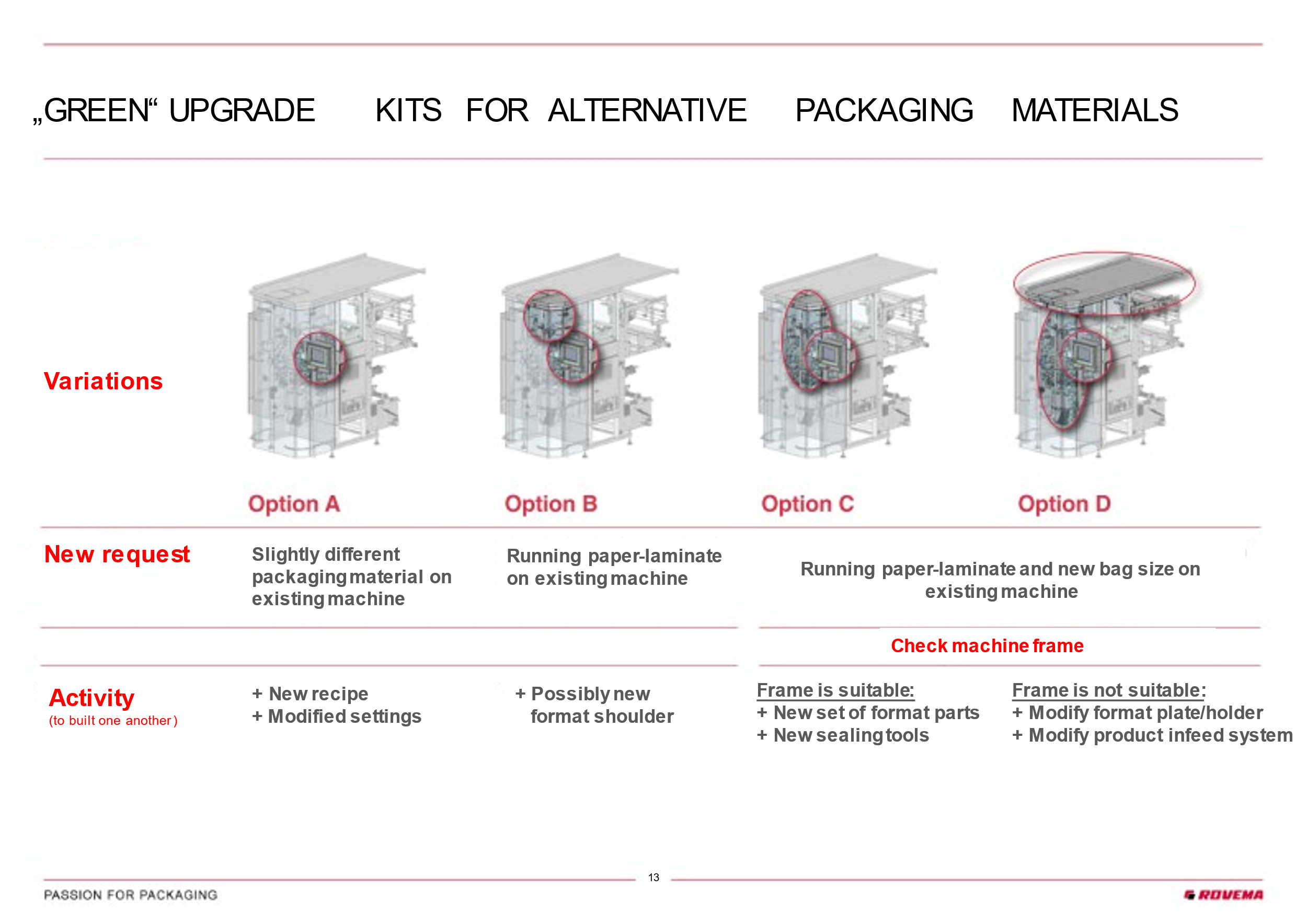6 Tips for Conducting a Successful Machinery Audit
We know from experience that keeping production buzzing is so much more than staying on schedule. It’s cliché to say there are a lot of moving parts...
3 min read
Grant Gerke : Tue, Feb 27, 2018

A recent 2017 industry research report, “The Evolution of Automation," from PMMI Group Media, reveals how many packaging and processing end users are moving into increased automation spends via equipment retrofits. As usual with most reports, the research points to many industry drivers pushing complexity into the plant, such as increased data reporting requirements and enterprise modernization initiatives.
An interesting takeaway from the report is the ability for companies of all sizes to adopt automation upgrades due to decreasing costs and quicker Return-on-Investments (ROI). As a machine builder, one automation driver Rovema sees is end users’ requests for more flexible machinery and modifications.
“In the last couple of years there seems to be much more interest in equipment that can be modified or repurposed to do virtually anything,” says John Panaseny, CEO of Rovema North America. Capital expenditure forecasting can be difficult and some desire investments that allow them to scale their operations or provide greater flexibility.
With this gradual automation adoption approach, some end users are looking to OEMs and automation vendors for electrical conversions of existing equipment. Reduced costs and more power from programmable logic controllers (PLCs), Variable Frequency Drives (VFDs)/motors and Human Machine Interfaces (HMIs) are pushing end users towards smart manufacturing and to future-proof operations.
A recent Tech Note on Rovema’s website provides a checklist on how to evaluate and proceed with an electrical conversion of a vertical form/fill/seal machine. A total electrical conversion will include HMI, servos, motors, PLCs, gearbox, VFDs, relays and terminals. This process will produce an entire electrical system that will be new with almost zero runtime and no wear, according the tech note.
The electrical conversion allows end users to update machinery and meet one of the stiffest challenges in today’s food industry: multiple SKUs. End users are producing smaller batches with more changeovers and there are many ways a new electrical conversion can help with this challenge.
With a higher level of control integration on a form/fill/seal machine, end users can optimize uptime while in different machine states. For example, an operator can trigger safe-torque-off and a driver output is disabled to remove motor torque without removing power from the entire machine. This feature reduces the application’s speed and provides the operator with the ability to safely perform some types of work without completely stopping the machine. Our Tech Note post on Rovema’s website provides a 13-step roadmap on how to update your vertical form/fill/seal machine with new servos and controls.
An electrical conversion can also help packaging equipment meet larger company initiatives such as plant monitoring projects that connect all production lines and work cells. According to the PMMI Automation Report, many packaging and processing companies' systems are integrated, more than 50%, with a handful of companies reporting 100% synchronization. Also, many lines remain loosely integrated due to existing assets and new lines are designed to be connected; European plants operate at a greater level of integration.
With the addition of motor and control retrofits, companies can also add middleware data acquisition solutions, such as Sage Clarity’s ABLE, that allow end users to add software platforms to monitor work cells or packaging line metrics in real-time. Another noticeable trend in the food and beverage space is leveraging OPC UA's industrial protocol — agnostic standard — to move variable data inside the plant and enterprise. Via data tags that tie into your packaging equipment’s PLCs, the OPC protocol in conjunction with lightweight, Supervisory Control and Data Acquisition (SCADA) platforms can provide real-time Overall Equipment Effectiveness (OEE) and machine trends to help operations and maintenance staffs troubleshoot issues.
Also, many companies are also capturing machine data via manual methods. The PMMI report adds that "4 out of 5 plants are collecting machine data at some level, both manually and automatically.” Manual collection of OEE data can be challenging for operators and we have provided an engineer’s handbook on how to best standardize these calculations. Rovema's handbook (Maximizing Overall Equipment Effectiveness for Vertical Bagging Operations) provides a comprehensive approach to implementing OEE data for vertical form/fill/seal machines and the number one requirement is defining your specifications.
The handbook notes that “it’s critically important that these specifications be formally documented and agreed by all parties. They should be published and posted near the equipment for consistent reference by operators and their Quality Control colleagues. Too often, a specification is casually established and anecdotally shared among colleagues. Those aren’t specifications - evolving guidelines. That’s the first enemy of efficiency - moving targets.
The OEE engineering handbook also provides samples of specifications and machine setup sheets in the Appendix.
There are many drivers converging in the food and beverage industry and complexity seems to be ubiquitous. Food safety, traceability, OEE, standardization and optimizing efficiency are just a few, but simple solutions like control retrofits are proving to be the right solution for many.

We know from experience that keeping production buzzing is so much more than staying on schedule. It’s cliché to say there are a lot of moving parts...

Improved Process Using Less Space Recent PMMI research found that manufacturers in the food industry have aggressive capital investment plans...

Sustainable packaging materials are becoming increasingly popular, and many of today’s CPG brand teams and other stakeholders are evaluating ...